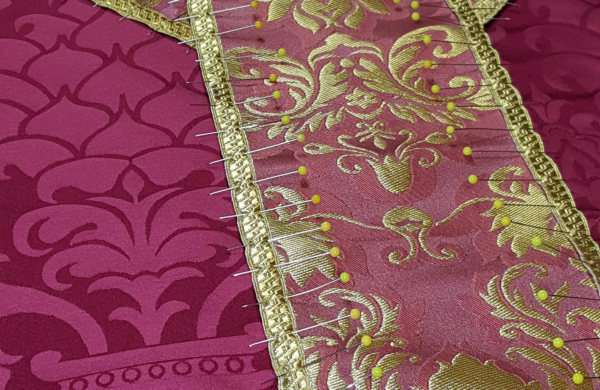
Creating perfect chasuble orphrey bands is easier with these 5 tips. Choose precise marking tools, finish edges to prevent unraveling, mark lines accurately, and pin perpendicular. Use the edge foot for even stitching, spot-check for consistency, and adjust as needed. These simple steps ensure polished and professionally sewn chasuble orphrey bands.
Like this:
Like Loading...

Ecclesiastical Sewing introduces new Chasuble patterns with fancy trims called orphrey bands. The blog explains orphrey bands’ history and talks about the special St. Hubert Brocatelle fabric. It shows how to choose trims and cut the fabric to make these beautiful church vestments, making the process easy to understand for everyone.
Like this:
Like Loading...
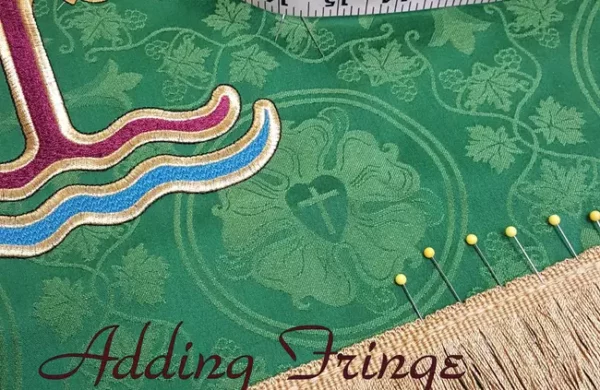
To sew fringe, you have two options. The first is using a multi-step zigzag stitch with a matching thread color. Keep the stitch width wide and length short, with zigs and zags about 1/4 inch apart. The second method involves using an edge foot for straight stitching. Adjust the needle position to stitch about 3/16″ from the fringe’s edge, and guide the fringe along the edge foot for straight and even stitches. Sew slowly to maintain precision.
Like this:
Like Loading...
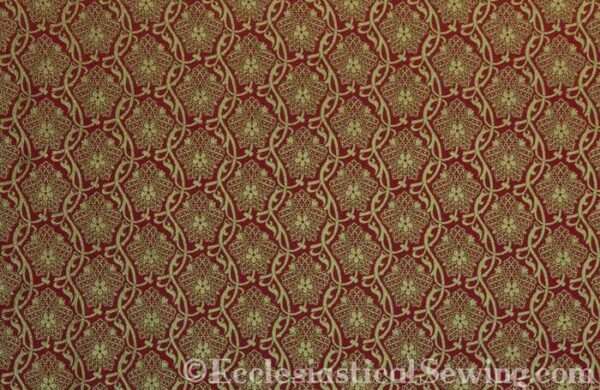
St. Hubert, designed by Sir Ninian Comper, was first produced as a liturgical fabric pattern circa 1890. This design has been recently reintroduced on a church fabric and is still lovely for use in making church vestments. As with most of Comper’s textiles, the inspiration for St. Hubert is of Netherlandish origin. This work comes from a 15th-century painting from the exhumation of St. Hubert. The fabric, made from a blend of cotton, silk, and metallic fibers, shimmers with accents of gold. While St. Hubert has a predominant right side, the fabric is also suitable for use on the “reverse” side, which makes for interesting design options
Like this:
Like Loading...
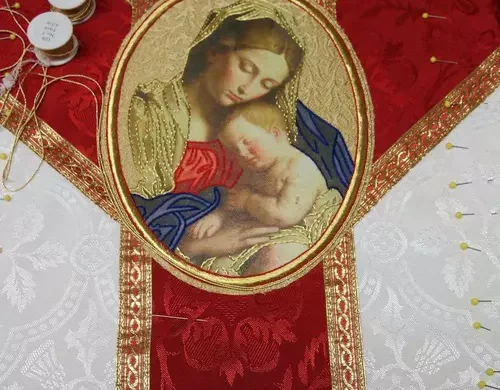
The Madonna and Child Goldwork Emblem is to be used on the back of a white Gothic chasuble. The chasuble is designed using our classic Gothic Chasuble Pattern cut with “Y” orphrey bands. The Virgin and Child design uses goldwork embroidery and colored thread embroidery embellishments on a hand-painted design. This Embroidery Design has a great deal of detailed work and requires care when applying it to a church vestment.
Like this:
Like Loading...

Featuring our beautiful violet stole and chasuble sets for Lent and Advent. They’re carefully made with rich Fairford brocade, perfect for church seasons. The St. Irenaeus Collection offers elegant Gothic and Monastic options.
Like this:
Like Loading...
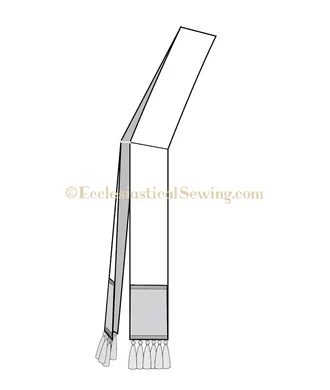
The deacon stole pattern is no more difficult to make than a pastoral or clergy stole. The deacon stole sewing pattern has mitered seams at the shoulder and waist. It uses two pattern pieces: one for the top and one for the bottom of the stole. There are also separate pattern pieces for the interfacing and lining. The pattern allows for a 5/8” seam. A variety of cross appliques can be used on the shoulder seam. Whichever cross is chosen, will have a prominent display when the vestment is worn. Tassels or fringe may be applied at the bottom of the deacon stole, just as with the clergy stoles
Like this:
Like Loading...
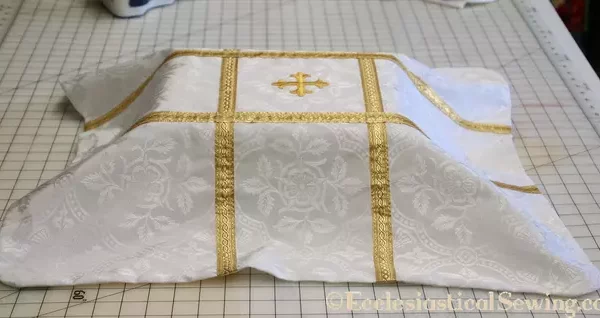
The tradition within the church is to use a Pall to cover the coffin for funerals. At the time of Pugin (early to mid-1800s), Palls were elaborate items, often embellished with extensive embroidery and gold work. Palls are still used today to cover a coffin during a funeral service. They are frequently white in color with a cross or other appropriate design applied. While churches may own a Pall for covering a coffin, they may not have a pall for covering an urn. The use of urns to replace large coffins is becoming more common.
Like this:
Like Loading...
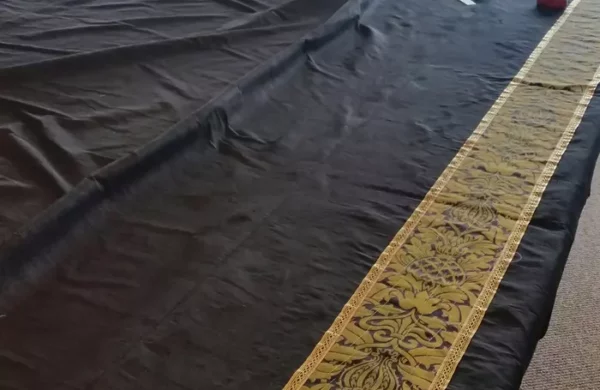
Any guesses? What is 88″ wide by 124″ long? We will use it at our local church for Good Friday… It is so big that we are spending Saturday… Read more Any guesses? →
Like this:
Like Loading...

Our new 4 1/2″ pastoral stole has a guideline for cutting stole orphreys for use at the lower edge, as well as for use on the upper chest. The orphrey size and guideline placement have been developed based on the design rule of thirds and by years of practice. Now, these placement and cutting sizes are “guidelines” and are not meant to take the place of checking to verify that the placement works for each and every situation. They are intended to help create a sense of balance and proportion when making a pastoral stole, by providing a starting point for the placement of orphrey bands or appliques.
Like this:
Like Loading...
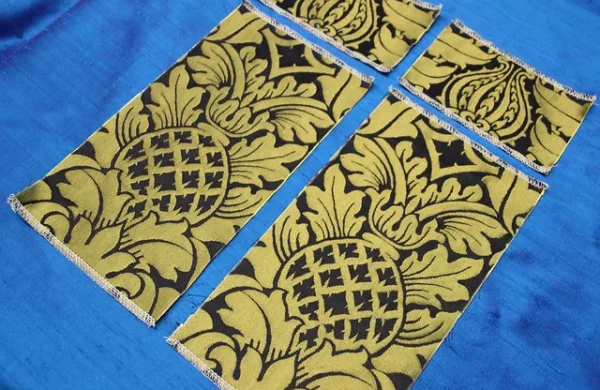
The St. Benet Black/gold trim is an excellent choice for either colored stole, as is the Black Dice trim, or the Gold St. Paul Braid.
Like this:
Like Loading...
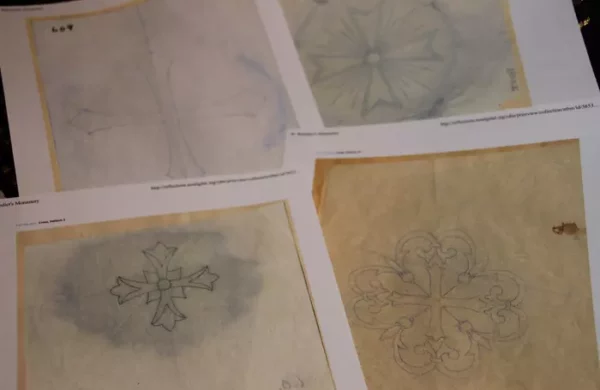
Fairford brocade offers two motifs: a pineapple and an ogee design. Choose the pineapple for the lower band and align it within selected cutting lines. Ensure minimal waste and use the ogee design for upper orphrey bands. Draw cutting lines with tailor’s chalk once satisfied with the design. Cut the motifs carefully, considering future usability of small fabric pieces.
Like this:
Like Loading...
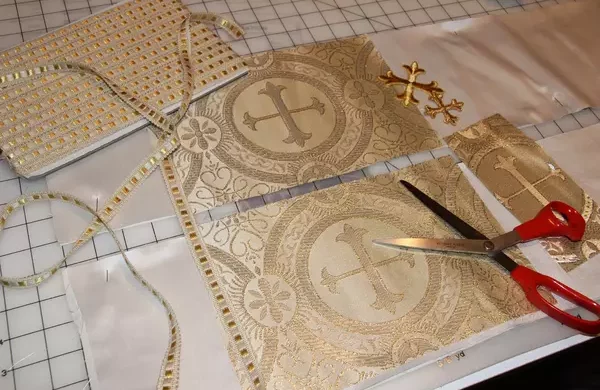
The white base fabric and fabric for orphrey trims. Finishing trim: galloon trim, braid, fringe, tassels and other trims suitable for Church vestments
Like this:
Like Loading...
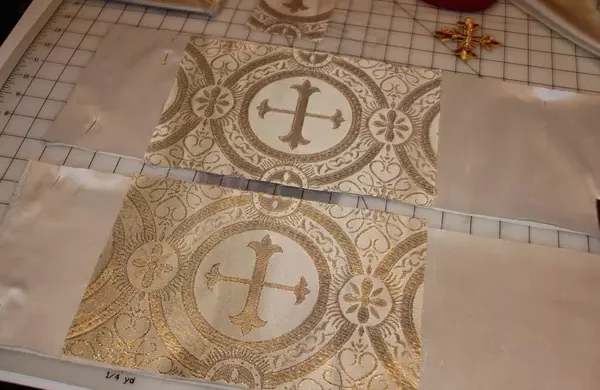
Making Priest or Pastor Stoles involves overcoming tricky parts. With Silk Shantung fabric, the challenge is its semi-transparency. To address this, underlining with unbleached muslin is presented. Orphrey size and placement are determined using the cutting table grid, following the design rule of “threes” for visual appeal. Now comes the tricky part: the lower edge of the stole. A geometry lesson and a protractor lead to marking angles and folding techniques, simplifying the process and making stole ends more enjoyable to finish.
Like this:
Like Loading...
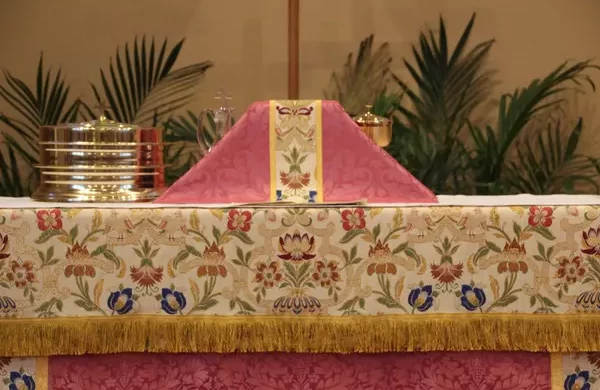
Chalice veils are very simple to construct. The beauty of the finished piece lies in excellent workmanship construction techniques and appropriate design placement. The design of a chalice veil can be as simple or elaborate as the imagination allows. Although the chalice veils do not have any trim around the edge, it is appropriate to use a cord as a decorative finish at the seam. Chalice veils often have a cross motif placed on the front edge too.
Like this:
Like Loading...
















You must be logged in to post a comment.